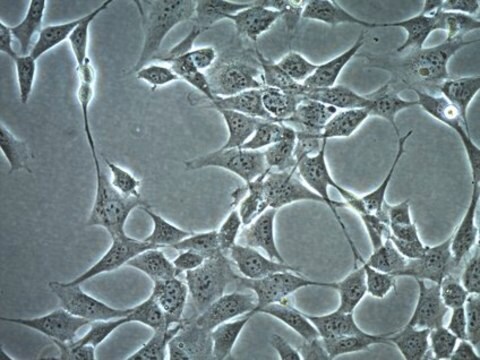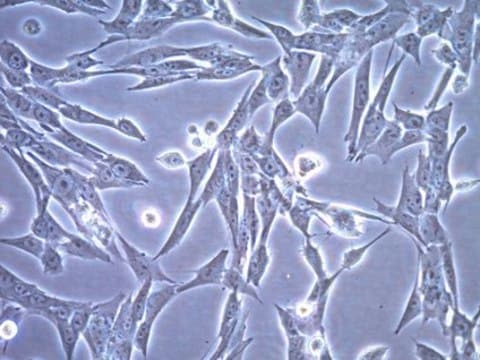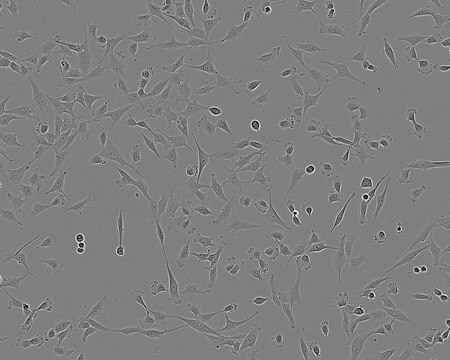SCC134
IMG Mouse Microglial Cell Line
Mouse
Synonim(y):
Immortalized microglial cells
About This Item
Polecane produkty
product name
IMG Mouse Microglial Cell Line, IMG microglial cells recapitulate key features of microglial cell activation and may be used to study neuroinflammatory responses underlying Alzheimer′s disease.
pochodzenie biologiczne
mouse
Poziom jakości
metody
cell based assay: suitable
Warunki transportu
ambient
Opis ogólny
Reference:
1. McCarthy RC, Lu DY, Alkhateeb A, Gardeck AM, Lee CH and Wessling-Resnick M (2016). Characterization of a novel adult murine immortalized microglial cell line and its activation by amyloid-beta. J. Neuroinflammation 13: 21
Opis linii komórkowej
Zastosowanie
Immune Response
Inflammation & Immunology
Neuroscience
Neurodegenerative Diseases
Neuroinflammation & Pain
Jakość
• Cells are tested negative for infectious diseases by a Mouse Essential CLEAR panel by Charles River Animal Diagnostic Services.
• Cells are verified to be of mouse origin and negative for inter-species contamination from rat, chinese hamster, Golden Syrian hamster, human and non-human primate (NHP) as assessed by a Contamination Clear panel by Charles River Animal Diagnostic Services.
• Cells are negative for mycoplasma contamination.
Przechowywanie i stabilność
Kod klasy składowania
12 - Non Combustible Liquids
Klasa zagrożenia wodnego (WGK)
WGK 1
Temperatura zapłonu (°F)
Not applicable
Temperatura zapłonu (°C)
Not applicable
Certyfikaty analizy (CoA)
Poszukaj Certyfikaty analizy (CoA), wpisując numer partii/serii produktów. Numery serii i partii można znaleźć na etykiecie produktu po słowach „seria” lub „partia”.
Masz już ten produkt?
Dokumenty związane z niedawno zakupionymi produktami zostały zamieszczone w Bibliotece dokumentów.
Nasz zespół naukowców ma doświadczenie we wszystkich obszarach badań, w tym w naukach przyrodniczych, materiałoznawstwie, syntezie chemicznej, chromatografii, analityce i wielu innych dziedzinach.
Skontaktuj się z zespołem ds. pomocy technicznej







